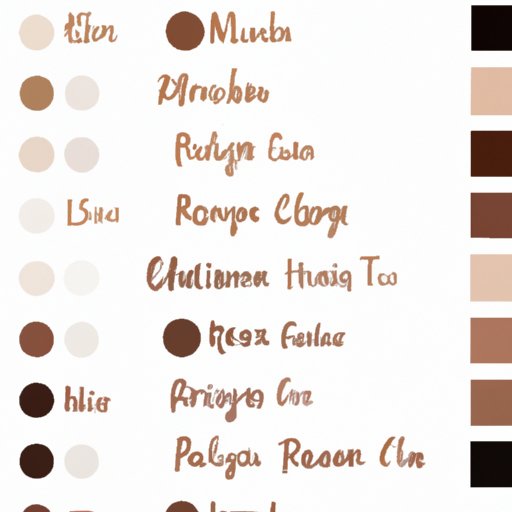Introduction
When describing people of Asian descent in writing, it’s important to be specific and accurate in order to avoid any potential stereotyping or tokenization. One way to do this is to accurately describe their skin tone. While there are several different skin tones that can be found within the Asian population, this article will focus on six main descriptors – porcelain, ivory, honey-toned, caramel, golden, and bronze.
Porcelain
The term “porcelain” is often used to describe a very light complexion. It is characterized by a fair complexion that is almost translucent and may have a slight pinkish hue. Porcelain skin is often compared to the color of fine china dishes or white marble. In writing, porcelain skin can be described as “fair,” “pale,” or “creamy.”
For example, a character with porcelain skin could be described as follows: “Her skin was a creamy, porcelain color that reminded him of delicate china dishes.”
Ivory
Ivory skin is similar to porcelain skin but with more of a warm undertone. It is often likened to the color of polished ivory and has a slightly yellowish hue. In writing, ivory skin can be described as “pale,” “ivory,” or “golden.”
For example, a character with ivory skin could be described as follows: “His skin was a pale ivory color, like polished ivory that had been warmed by the sun.”
Honey-Toned
Honey-toned skin has a medium complexion and is often characterized by a warm yellow or golden undertone. It is often compared to the color of liquid honey or golden sand. In writing, honey-toned skin can be described as “warm,” “golden,” or “honey-colored.”
For example, a character with honey-toned skin could be described as follows: “Her skin was a warm golden color, like liquid honey dripping from a spoon.”
Caramel
Caramel skin has a darker complexion and is often characterized by a reddish-brown hue. It is often compared to the color of freshly cooked caramel. In writing, caramel skin can be described as “deeply tanned,” “rich,” or “caramel-colored.”
For example, a character with caramel skin could be described as follows: “His skin was a deep tan color, like freshly cooked caramel.”
Golden
Golden skin has a dark complexion and is often characterized by a yellowish-brown hue. It is often compared to the color of melted gold or bronze. In writing, golden skin can be described as “bronze,” “burnished,” or “golden.”
For example, a character with golden skin could be described as follows: “Her skin was a burnished golden color, like melted gold.”
Bronze
Bronze skin has the darkest complexion and is often characterized by a dark brown hue. It is often compared to the color of old bronze coins or sculptures. In writing, bronze skin can be described as “dark,” “deep,” or “bronze-colored.”
For example, a character with bronze skin could be described as follows: “His skin was a deep bronze color, like an old bronze coin.”
Conclusion
In conclusion, when describing people of Asian descent in writing, it’s important to be specific and accurate in order to avoid any potential stereotyping or tokenization. This article has explored six main descriptors for Asian skin tones – porcelain, ivory, honey-toned, caramel, golden, and bronze – along with their definitions and examples of use in writing. By using these descriptors, authors can provide an accurate and detailed description of their characters without relying on stereotypes or tokenization.
(Note: Is this article not meeting your expectations? Do you have knowledge or insights to share? Unlock new opportunities and expand your reach by joining our authors team. Click Registration to join us and share your expertise with our readers.)
